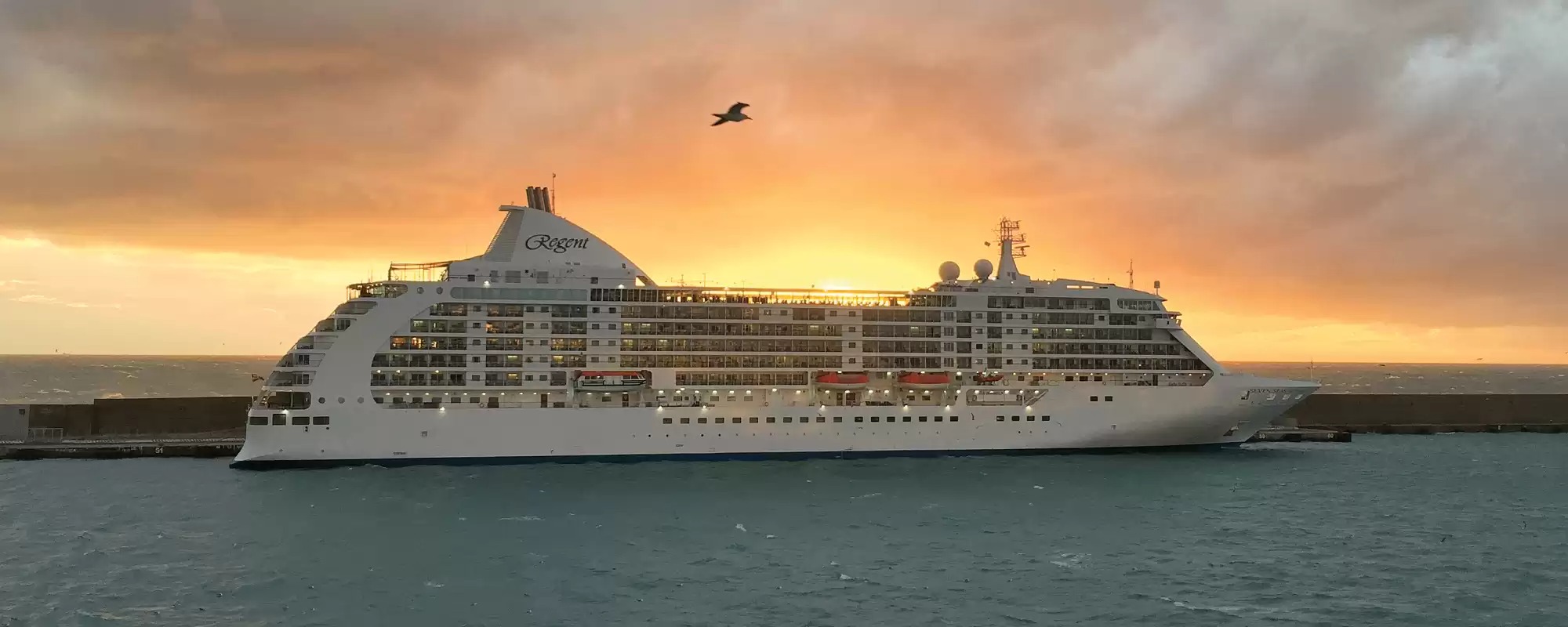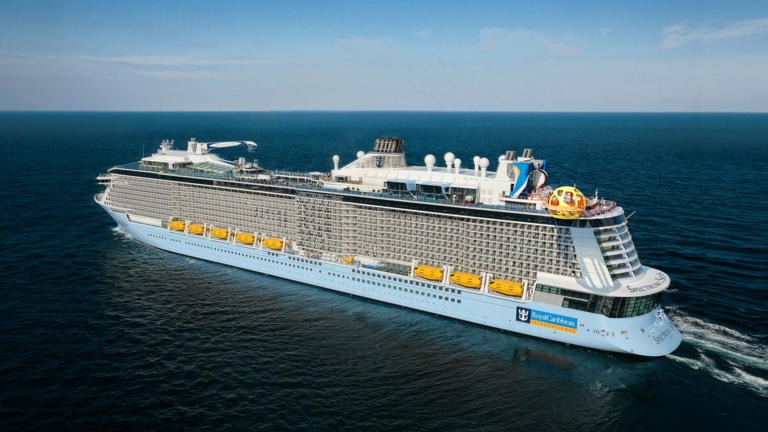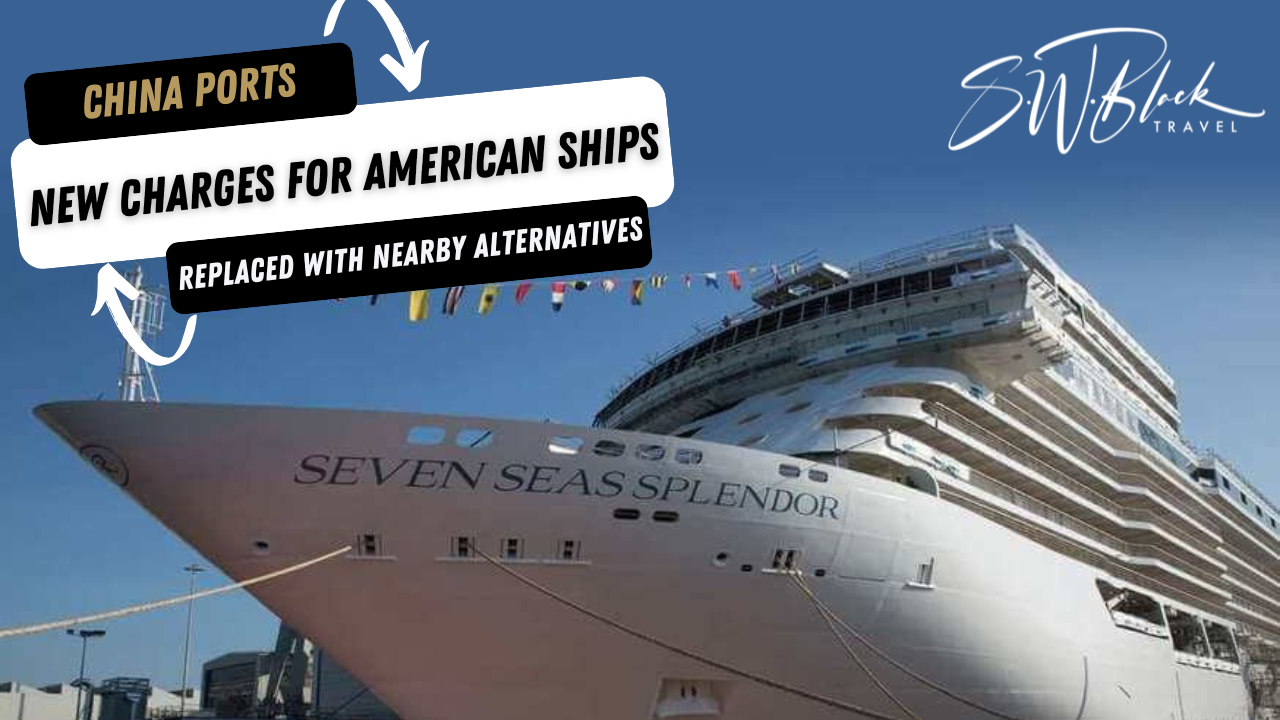A fast policy change in mainland China has nudged several cruise lines to redraw parts of their Asia programs. If you are planning a North Asia voyage, the headline is clear: some calls to Chinese ports are being replaced with nearby alternatives so itineraries stay smooth, value holds steady, and the overall destination experience still delivers across sea days and shore time.
Mainland China has introduced new port charges for American ships, starting around US$56 (approx. A$88) per net ton and escalating toward US$157 (approx. A$245) per net ton by 2028. Oceania and Regent Seven Seas are revising selected sailings, with exemptions for vessels homeported in China. Travellers should expect substitute calls in Japan, South Korea, and Taiwan that preserve pacing, provisioning, and shore choice.
What Changed in Mainland China
This is a fee framework that lands squarely on operating costs and schedule certainty. Although originally aimed at cargo, the rules have been extended to cruise, which makes short leisure calls hard to justify. Lines are reacting early to protect the shape of their voyages and give guests reliable plans well before embarkation.
The New Fee Structure and Timeline
The policy introduces charges starting at US$56 (approx. A$88) per net ton, rising to about US$157 (approx. A$245) per net ton by 2028. Because this is calculated on ship size rather than a simple per-passenger levy, a single day alongside can jump into seven figures for large vessels. That scale pushes planners to rethink one-off calls and move toward nearby ports with stable costs.
Who Is Affected and Who Is Exempt
The fees target American ships, with an important carve-out: vessels homeported in China are exempt. That is why a ship like Royal Caribbean’s Spectrum of the Seas, based in Shanghai, is not impacted the same way. For brands that touch Chinese ports as part of a longer loop without basing there, the economics no longer make sense for occasional calls.
Why Lines Are Pivoting Now
Cruise schedules are complex trains in motion. A late change to one port ripples across pilots, terminal slots, immigration, bunkering, and shore partners. Making the switch early avoids knock-on delays and lets destination teams refocus on substitute ports, so guests still get a well-paced mix of culture, cuisine, and coastline without last-minute scrambles.
How Cruise Lines Are Adjusting Itineraries
Two premium brands have already moved, setting the pattern others can follow if needed. The aim is not to gut itineraries, it is to preserve the geographic flavour using proximate ports that offer similar depth with fewer operational risks.

Oceania’s Immediate Shanghai Replacement
Oceania cancelled a Shanghai call after Oceania Riviera was reportedly asked to pay about US$1.6 million (approx. A$2.5 million) in additional port fees for a 16 October visit. The ship switched to Busan, keeping the voyage cadence intact and giving guests rich urban and coastal options ashore. Swaps like this are designed to feel lateral in interest, not like a step down.
Regent Seven Seas’ Select Revisions
Regent Seven Seas Cruises is revising selected itineraries to remove mainland Chinese calls. Expect adjustments toward Japan, South Korea, or Taiwan, where sailing distances, pilotage, and terminal capacity fit easily into luxury pacing. The brand’s hallmark longer days in port and inclusive touring continue, simply re-anchored in substitute destinations.
Implications for Other Lines
Other American lines with one-off Chinese calls inside longer Asia routes are reviewing exposure. If a single stop creates outsized cost or risk, planners will trade it for a nearby port that keeps the rhythm of sea and shore days. Good communication, clear shore options, and stable arrival times are the priorities guests will notice.
What This Means for Travellers
Your reasons to sail North Asia remain compelling. The difference is where those experiences happen. Japan, South Korea, and Taiwan bring deep benches of walkable towns, efficient transport, and layered history, so the substituted calls are often equal in interest, sometimes easier.
Expect Smart Substitute Ports
Watch for Busan, Fukuoka, Nagasaki, Kagoshima, Keelung for Taipei, or Ishigaki to appear where Shanghai, Xiamen, or Tianjin once sat. These choices preserve flight plans, keep sailing distances tidy, and offer shore programs that can be confirmed early. Onboard destination teams update talks and daily planners quickly, so you step ashore with confidence.
Shore Excursions, Credits, and Visas
Line-sold excursions attached to cancelled ports are typically refunded or rebooked to the new call. Visa settings often become simpler, since cruise visits to Japan, South Korea, and Taiwan are generally straightforward for Australians and many international guests. Your line will confirm any paperwork shifts, but in most cases, the admin lightens rather than grows.
Insurance and Independent Arrangements
If you built private tours or hotel stays around a now-removed port, contact providers promptly with your revised schedule. Comprehensive travel insurance remains sensible during regulatory shifts, protecting prepaid elements around embarkation or independent touring. Cruise lines try to add value at substitute calls, not simply delete a day from the journey.
Planning Asia Cruises in the New Landscape
You can still craft an excellent North Asia route by focusing on homeports, seasonality, and how much border crossing suits your style. The recipe is familiar, the centre of gravity tilts toward Japan and Korea while China recalibrates.
Choose Strong Homeports and Gateways
Anchor on Tokyo (Yokohama), Osaka, Kobe, Keelung, or Busan. These cities pair nicely with Australian gateways through frequent overnight departures and stable schedules. If you prefer fewer border hops, a Japan-only loop packs temples, castle towns, volcanic coastlines, and food-rich neighbourhoods into short sailing distances.
Time Your Trip for Weather and Festivals
Spring and autumn offer comfortable temperatures and standout scenery, summer layers in festivals and beach days, while winter can be crisp, clear, and less crowded in parts of Japan and Korea. Late shoulder weeks often deliver value, especially outside local school holidays. With capacity leaning into these markets, date choice improves for families and solo travellers alike.
Pick the Right Cabin for Your Rhythm
Select cabins that fit how you move through a day. Early risers who love city sail-ins will enjoy a balcony for sunrise photos and coffee moments. Travellers who spend all day ashore might prefer a well-located oceanview near the lifts, trading terrace time for convenience and price. If motion sensitivity is a concern, midship and lower decks are your friend.
Practical Tips to Keep Your Plans on Track
Even with itinerary edits, the fundamentals of a good cruise plan remain the same. A little foresight makes the difference between a fine trip and a brilliant one.

Lock Flights With Sensible Flexibility
Choose fares that allow modest time changes without painful penalties. If a revised port pattern nudges embarkation or disembarkation timing, flexible tickets make pivots painless. Build healthy buffers for international connections, particularly in peak seasons.
Prioritise Ports That Fit Your Interests
Food lovers can target calls known for markets, izakaya alleys, or seafood halls. History buffs may prioritise castle towns and wartime museums. Nature fans can chase coastal calderas, island viewpoints, and hot-spring districts. Matching the port mix to your interests ensures every step ashore feels intentional.
Book Line-Sold Tours Where Timing Is Tight
For ports with tight transport windows or longer transfers, line-sold tours provide schedule protection and easy refunds if a ship-side change occurs. For short, walkable towns, independent exploring or small-group local tours often give you more spontaneity.
Before the conclusion, here are two quick notes to help you choose with confidence and check live availability across the region. If you are weighing Japan-focused loops against Korea-heavy routes with a Taiwan stop, a side-by-side calendar view will reveal the best weather windows and flight options in minutes.
To turn ideas into a shortlist, explore sailings by month, length, and embarkation city using our Cruise Finder. It is a straightforward way to compare revised routes, spot value weeks, and match dates to school holidays or annual leave.
Plan With a Cruise Adviser and Sail Confidently
The policy shift in China is significant, yet brands have responded quickly, protecting guest experience with well-chosen substitutes. If you would like tailored help selecting ships, dates, and a route that prioritises what you want from North Asia, speak with a cruise adviser who understands port operations and line-by-line nuances. We will review revised itineraries, compare packages, and help you secure the right cabins at the right time. When you are ready, get personalised help.


Comments